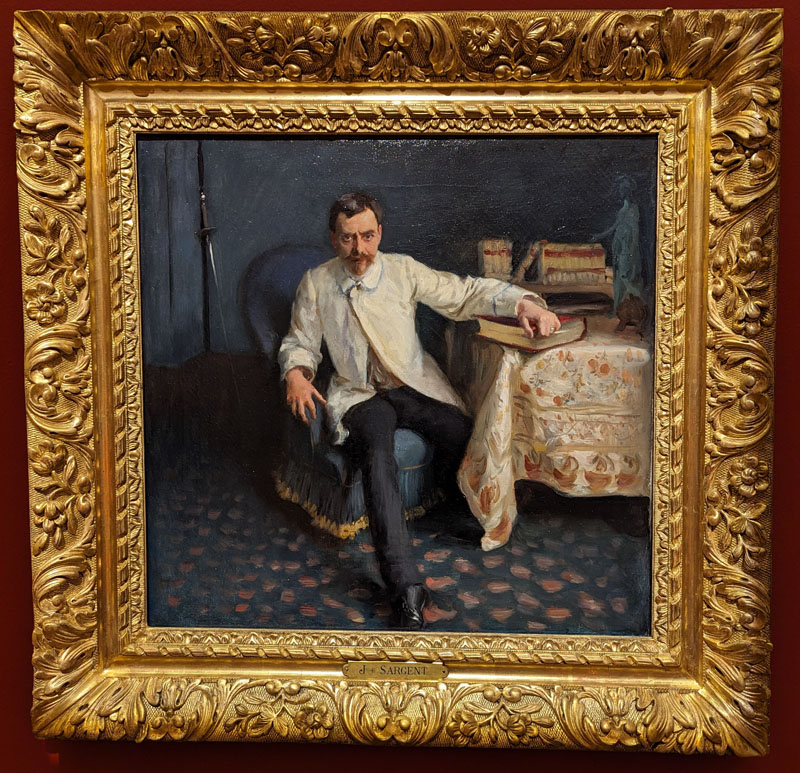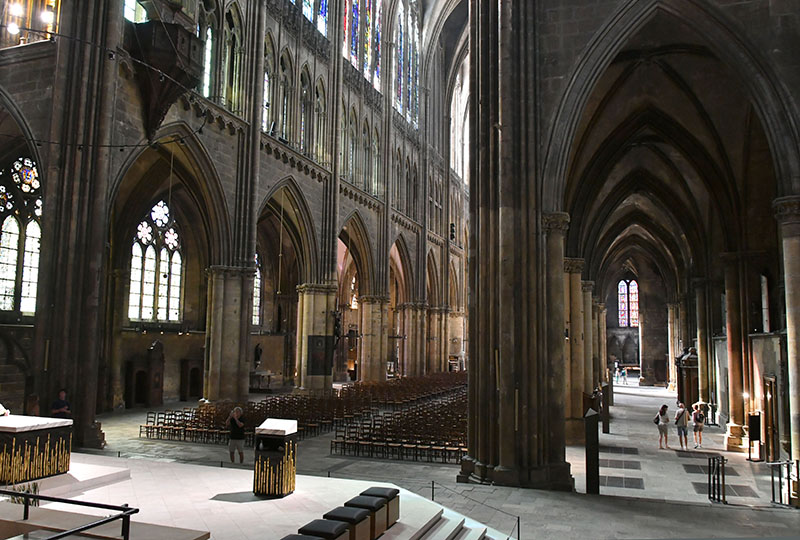
Brief History of Metz

Metz is a beautiful city nestled in the Lorraine region of France. Situated near the border between France and Germany, Metz has been a contested territory for centuries. Its strategic location has made it a target for invasion and a prize for conquest. Today, you can have an easy, 90-minute train ride from Paris to Metz.
Its location near the German border has made it a melting pot for various influences- Roman, Germanic, and French cultures, creating a stunning cityscape that blends several architectural styles, from Romanesque and Gothic to Renaissance and Baroque. This diversity is evident in its churches, public buildings, and residential architecture. The city is renowned for its vivid stained glass windows, particularly those found in the Saint-Étienne Cathedral. These windows depict religious scenes, historical events, and local legends, and even include some modern stained glass windows made by Chagall. Metz is home to several free museums, including the Centre Pompidou-Metz, which showcases contemporary art. Despite being an urban center, Metz is surrounded by beautiful nature, including the Moselle River and its vineyards. This combination of city and nature makes it a unique destination worth your visit. You won’t see large Paris crowds, rather experience the beauty of architecture at your own pace.
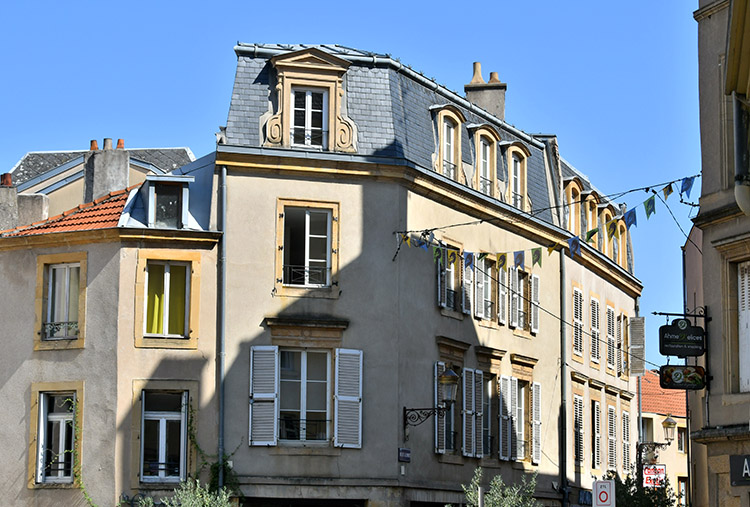
First settlements:
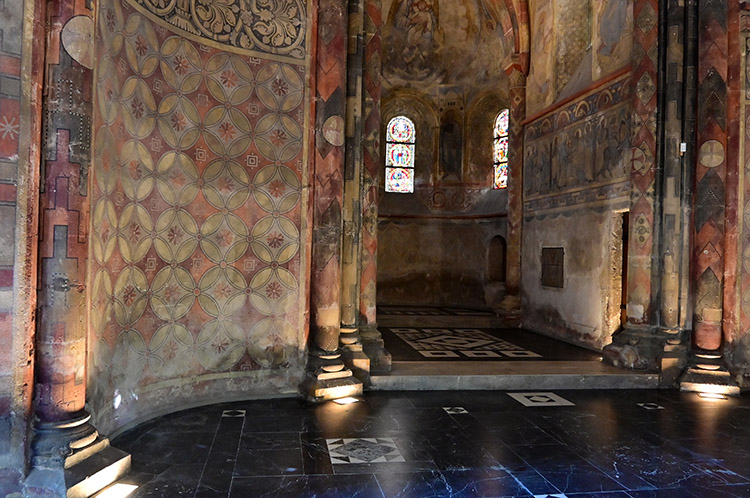
Celts were the first known inhabitants of the region, and they likely established a settlement on the site of Metz. Later, the Romans conquered the area and founded a city called Divodurum Mediomatricorum. So, Metz became a Roman city in the 1st century CE, adopting Latin culture and architecture. The city flourished under Roman rule, with significant infrastructure development and the construction of public buildings. In the art museum, you can view some Roman mosaics, sculpture and sarcophagus of this period.
The Middle Ages:
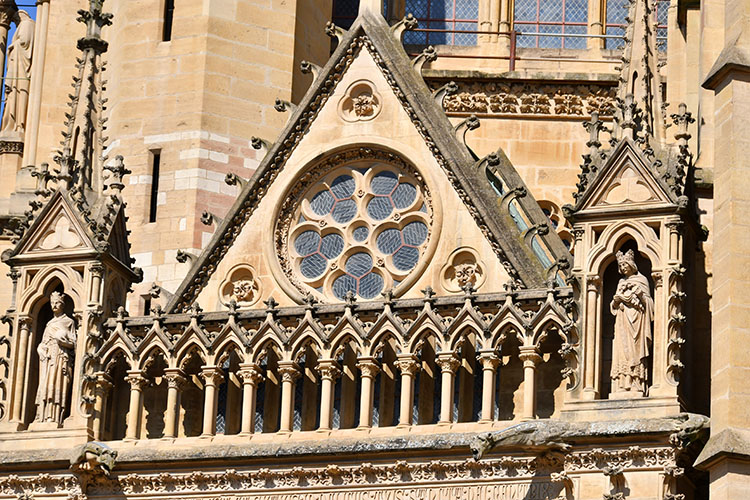
In the early Middle Ages, Metz was an important religious center, with several bishops and archbishops hailing from the city. During the Middle Ages, Metz prospered as it became a free imperial city, independent of both the French and German kingdoms. This autonomy allowed the city to develop its own culture and economy. The most famous examples of the middle ages are Saint-Étienne Cathedral, Eglise Saint-Eucaire and Temple Neuf. Saint-Étienne Cathedral (12th-14th centuries) is truly inspiring both inside and outside. Dark and somber, it’s a masterpiece of Gothic architecture. It features soaring arches, absolutely beautiful gigantic rose window “Tree of Jesse,” depicting the genealogy of Jesus Christ. and many other vivid stained glass windows that cast colorful light onto chairs and floor of the cathedral. Temple Neuf (12th century) is a Romanesque church with a modest exterior but richly decorated interior. Inside this church, you may find a crypt, which dates back to the 10th century.
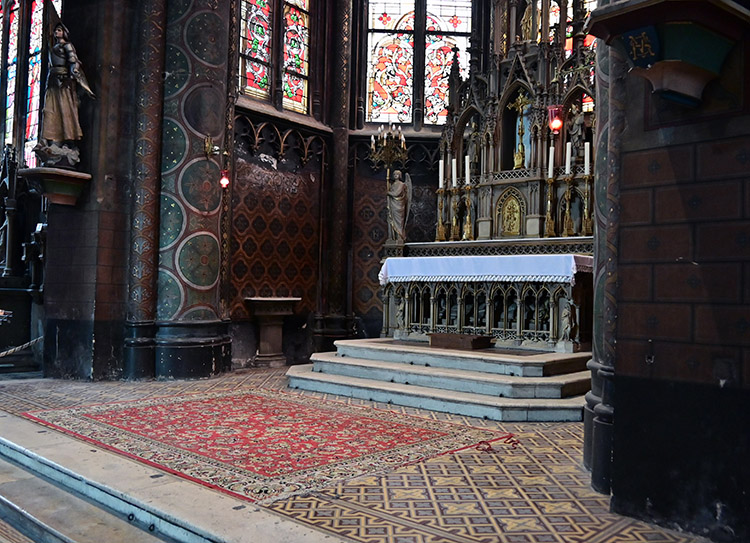
This church founded in the 5th century was originally located outside the city walls, on the Roman road to Mainz. It is dedicated to Saint Eucaire, the first bishop of Trier in the 3rd century. Rebuilt between the 12th and 15th centuries, it encompasses a range of architectural styles from Romanesque art to Flamboyant Gothic. A sturdily built square bell tower, the oldest in Metz, stands at its center. It dates from the second half of the 12th century.
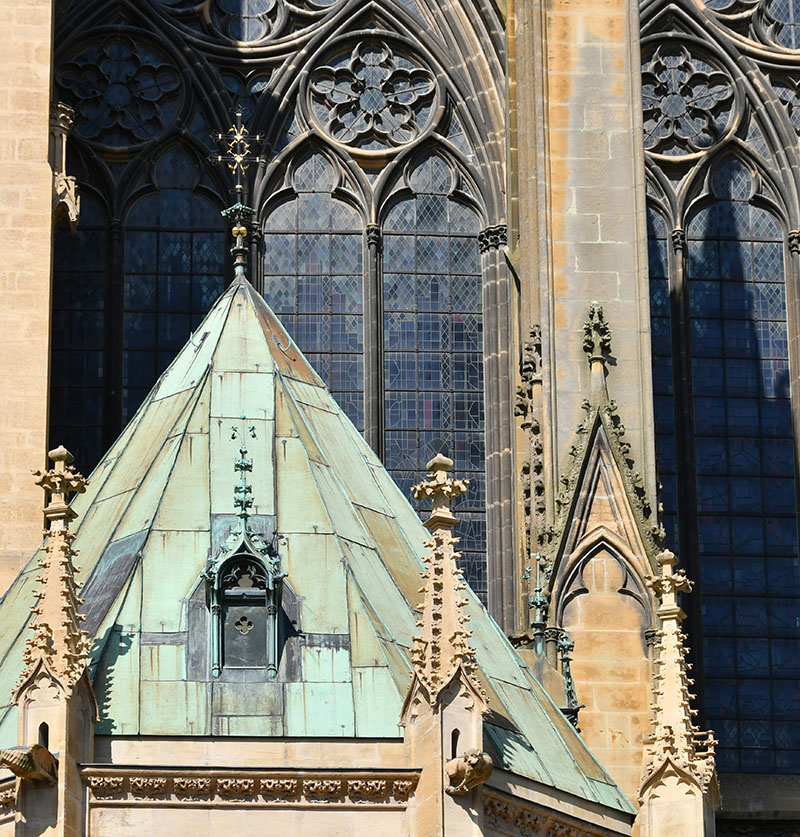
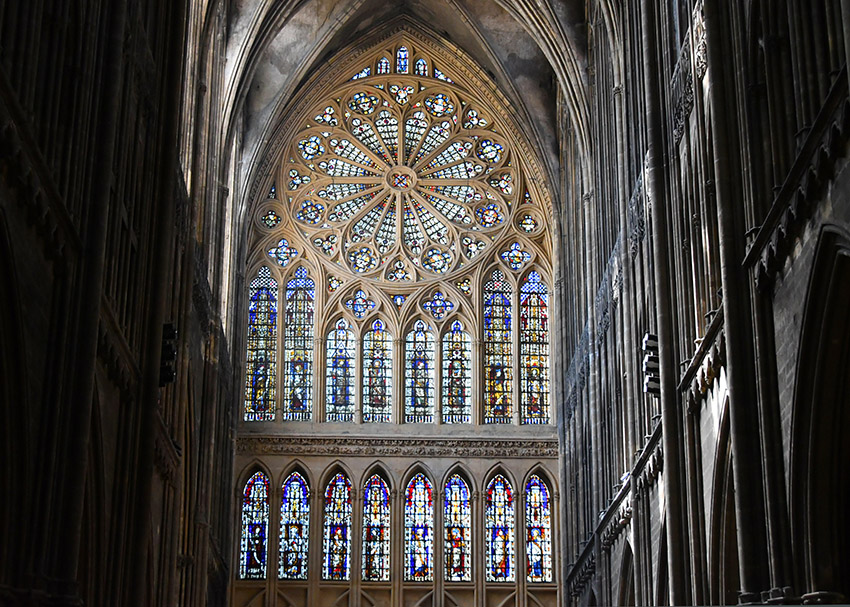
The cathedral’s foundation was laid in the early 12th century, likely around 1138. The initial structure was built in the Romanesque style, characterized by its rounded arches, thick walls, and heavy ornamentation. In the late 13th century, construction on the cathedral resumed in the Gothic style. This architectural style emerged in northern France and was characterized by its pointed arches, flying buttresses, and large stained glass windows.
The Choir (1270-1310): The first major phase of Gothic construction was the choir, completed between 1270 and 1310.
The Transept (1310-1330): The transept is the arms of the cathedral that extend from the nave. Its large stained glass windows, including the famous “Tree of Jesse,” depict biblical scenes and religious symbolism.
The Nave (1330-1430): The nave is the main body of the cathedral. Construction took place over a century. The nave’s imposing height and light-filled interior create a sense of awe.
The West Front (14th century): The cathedral’s west front features three large portals decorated with sculptures and carvings.
The Towers (15th century): The two towers that flank the west front were added in the 15th century. They were originally designed to be much taller but were never completed.
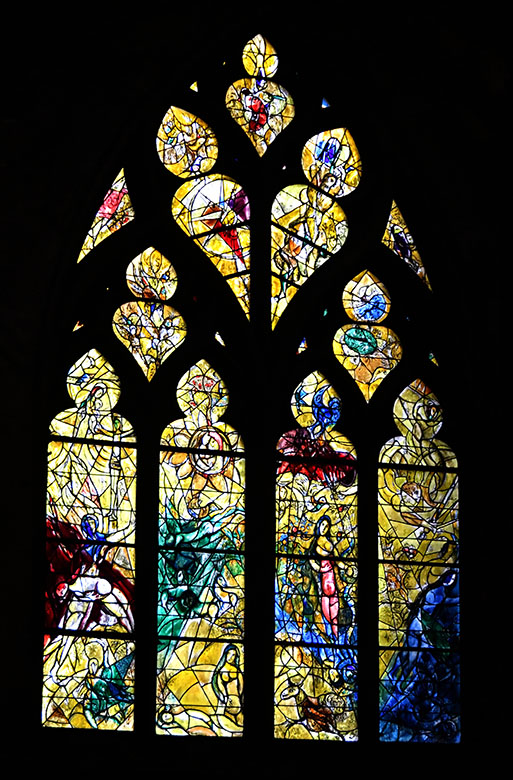
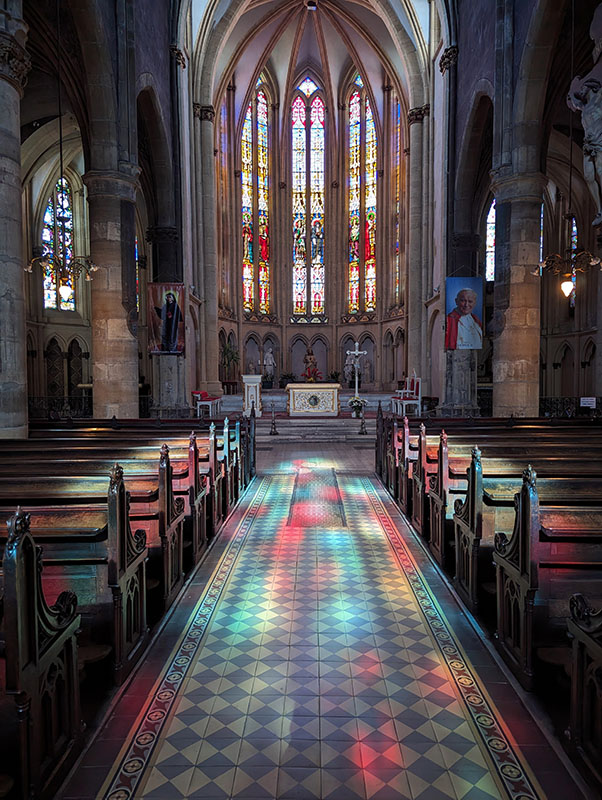
The Renaissance & Baroque:
The Renaissance and Baroque periods brought new artistic styles and influences to Metz. The city’s wealthy merchants commissioned grand residences and public buildings decorated with lavish architectural elements. One of such places is Place Saint-Louis (18th century). It’s a beautiful square surrounded by elegant Baroque buildings, featuring a fountain and a statue of Louis XV.
German Influence:
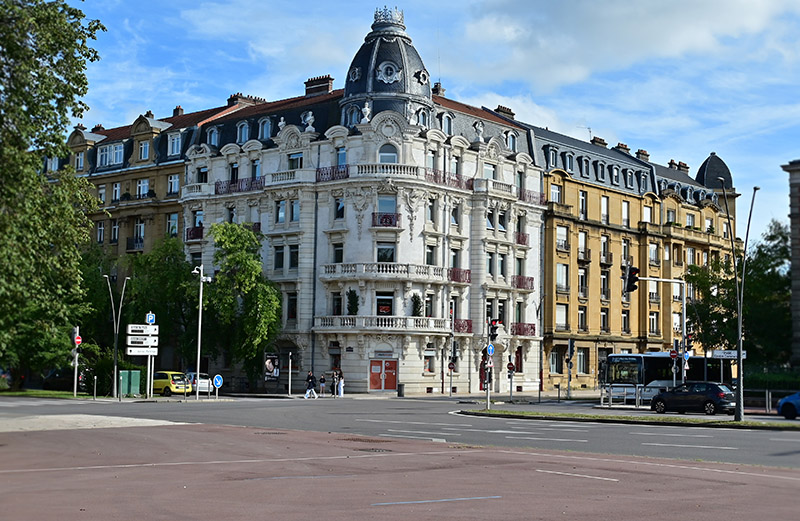
The 19th century saw Metz become part of the German Empire. Despite the change in sovereignty, the city continued to thrive, and its architecture and culture absorbed the German art styles. The Belle Époque era brought about significant urban development, including the construction of the Porte des Allemands, a grand triumphal arch (1871). A triumphal arch built in a neoclassical style, commemorating the annexation of Metz by Germany. The arch features sculptures of German military figures and allegorical representations of the city. In the 20th century, Metz was heavily damaged during World War II but has since been carefully restored. Contemporary architecture includes building of the Centre Pompidou-Metz (2010). This is a contemporary art museum that features a large, undulating roof that resembles a boat.
Here are a few prominent figures who lived in Metz:
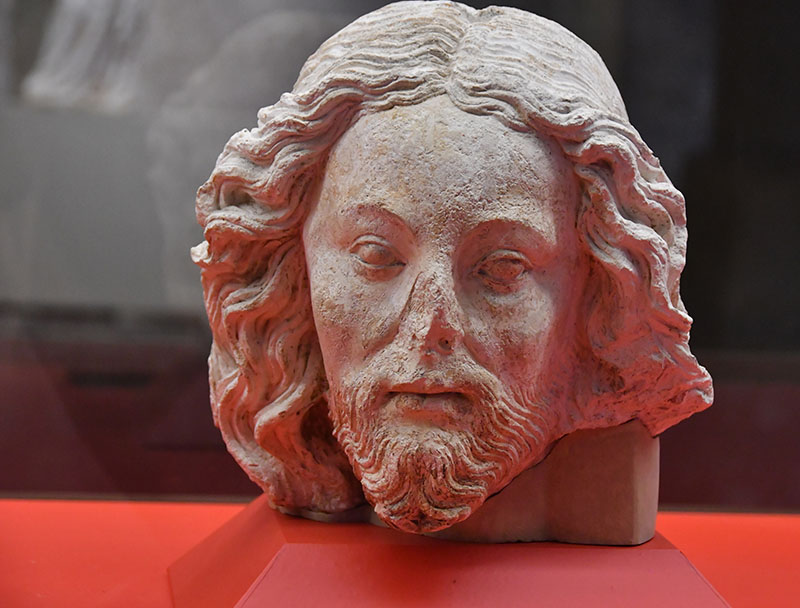
- Saint Ambrose (339-397): A renowned theologian and Church Father who was born in Metz. He was a key figure in the development of Christian doctrine and served as the Bishop of Milan.
- Charles the Great (742-814): The Carolingian king and emperor, who ruled over a vast empire that included Metz. He is considered one of the most influential figures in European history.
- Saint Arnould (582-640): The first bishop of Metz, who is credited with founding the city’s first cathedral. He is a patron saint of the city.
- Saint Clothilde (475-544): The wife of Clovis I, the first Frankish king to convert to Christianity. She is considered a saint and is associated with the city of Metz.
- Pierre de Coubertin (1863-1937): The founder of the modern Olympic Games, who was born in Paris but spent much of his childhood in Metz. His family’s roots are deeply connected to the city.
- Jean-Marie Le Pen (born 1928): A French politician and the founder of the National Front party. He was born in Metz and spent his early years there.
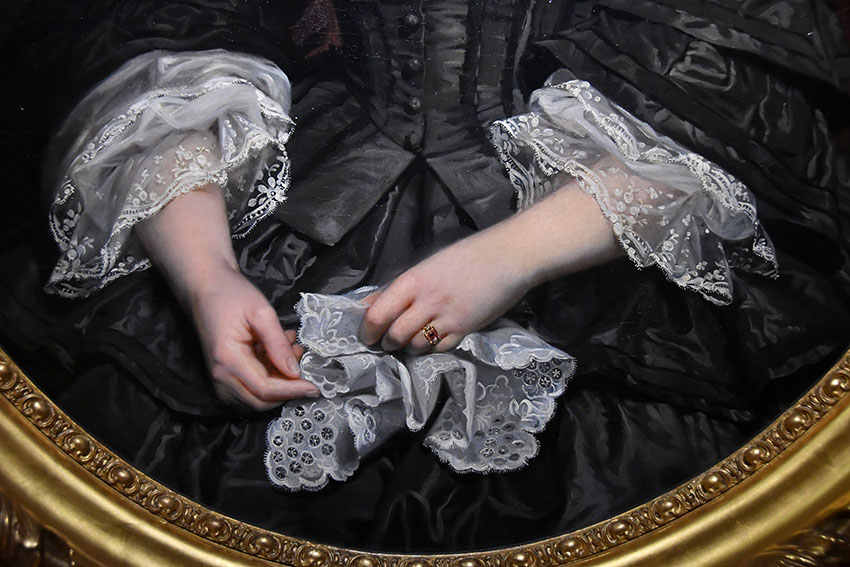
Major Historic Sights in Metz
- Saint-Étienne Cathedral: A magnificent Gothic cathedral renowned for its beautiful stained glass windows and elaborate architecture.
- Place Saint-Louis: A charming square surrounded by 18th-century buildings, featuring a fountain and a statue of Louis XV.
- Porte des Allemands: A triumphal arch built to commemorate the annexation of Metz by Germany in 1871.
- Centre Pompidou-Metz: A contemporary art museum designed by Shigeru Ban, Jean de Gastines, and Philip Gumuchdjian.
- Temple Neuf: A Protestant church built in the 12th century, featuring beautiful Romanesque architecture.
- Musée de la Cour d’Or: A museum dedicated to the history and archaeology of the region.
- Arsenal: A former military arsenal converted into a cultural center, hosting exhibitions and events.
- Opera House
Metz’s possesses truly inspiring architectural blend of churches and buildings set against beautiful, clean streets, fountains and summer flowers. If you’re seeking to explore the history and diversity of France, this town is one of such charming places in France.
